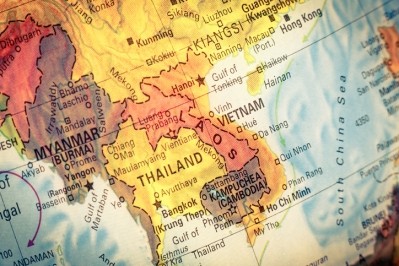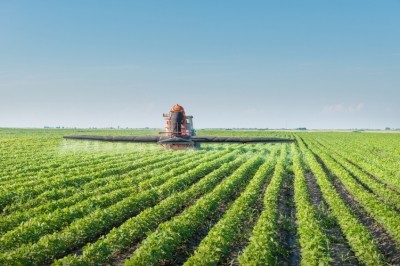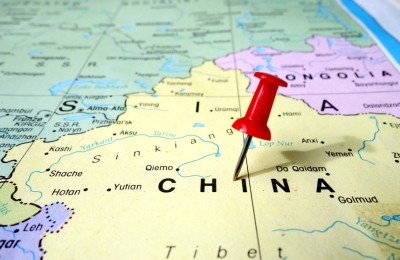IFFO: Chinese fishmeal imports see a boost

We caught up with Maggie Xu, China director with the Marine Ingredients Organization (IFFO) at last week’s IFFO conference in Washington DC to hear more about the trends influencing aquaculture growth and development along with the use and production of fishmeal and fish oil in China.
The country has seen the import of aquaculture feed ingredients like fishmeal and oil increase as environmental protection standards start to take effect, she said.
“Once again this year the environmental protection, pollution is still the big, big, the most important topic,” she said. “The Chinese government wants to see higher efficiency and the pond rent – the rent for the fishing pond is going up.”
“In July this year 210,000 tons of fishmeal arrived in China, which is an increase of 160% year-on-year or an increase of 76% month-on-month,” she said. The import amounts continued to grow in August, when levels of imported fishmeal reached 108% of what was brought in for that period the previous year, she added.
“Accumulatively in the first eight months of the year, Chinese fishmeal imports were up 67% over the same time last year against the much reduced domestic output and appreciation of Chinese currency,” said Xu.
Fish oil imports have demonstrated some similar trends, she said. “During the first eight months of 2017 China imported 67% more fish oil compared with the same time last year – the leading reason why is the comparably lower prices in the international market this year,” she added.
Industry influences
However, China’s domestic production side of fishmeal and fish oil production has been reduced, said Xu. There also is starting to be consolidation among fishmeal and oil producers.
Production of fishmeal and oil dropped for several reasons including a scarcity of raw materials, she said.
The fishing moratorium that often runs from June through September was extended by a month and there is some discussion that in future years a fishing quota system, like that used in other areas including Peru, may be establishing to offer additional management to fish species, she said. “It was extended by one month this year the purpose is to deal with the fishery biomass scarcity problem,” she added.
“The other reason for reduced domestic supply in terms of fishmeal and fish oil is environmental protection inspections,” Xu said. “This is something really, really big in China, not only for us, but for every industry in China from aquaculture, to feed production, to animal farming, pig farming, poultry farming [and] all the way until heavy industry everybody, everything is involved.”
The increased regulatory awareness and inspections seek to deal with issues of pollution, she said. For a fishmeal production facility, the concerns include odor when the plant is in operation and the potential for water contamination if plant discharge is not properly purified.
By the start of October, there were reportedly several fishmeal production facilities that had not restarted operations from concerns of not meeting the new environmental standards, she said.
However, fish oil being produced in the northern part of China has been found to be of higher quality than what has been seen in past years, she said. But that means it is more expensive for plants to purchase fish.
In addition to consolidation among Chinese producers of fishmeal, the trend is continuing through feed producers and pig farmers, said Xu. For the first part of the year, feed production output slowed year on year.
“The government of China wants to see higher quality and safety standards and environmental standards rather than quantity,” she said. “They’re still concerned regarding quantity, but they’re more concerned regarding quality and the safety and the efficiency.”
However, it is less clear if the consolidation pattern is happening currently for aquaculture producers, she said.
“But, regarding aquaculture, the government of China is strongly encouraging offshore aquaculture to the deeper and open seas and if that is the direction for the future then only the big players can afford it – small fish farmers cannot afford deep-sea farming,” she said.
Large companies also are investing in aquaculture enterprises outside of the country, said Xu. In part, this may be in response to access to fish populations.
“There are more and more Chinese companies investing outside China,” she said. “For example, fishmeal producing – they are now producing fishmeal in Africa and in Southeast Asia – they produce the fishmeal in Africa and then ship it to China for Chinese markets.”
Fish feed producers have been operating externally for several years, she said. But feed produced in regions including Southeast Asia often is marketed domestically and not returned to China.
Fishmeal and oil use
When fishmeal prices drop, producers tend to increase inclusion rates, said Xu.
The association tracks development of several different species that commonly have fishmeal in their diets, she said. These include shrimp, eel, softshell turtle, yellow catfish, seabass, golden pomfret and crayfish.
However, already this year acreage for freshwater fish production has shrunk, which could stem from the change in environmental regulation, she said. The government also is encouraging freshwater farms to move from the central part of China to the western area.
In addition to the use in aquafeeds, fishmeal in China is a common component in creep feed for piglets, said Xu.
“This year the real star of fishmeal consumption is pig farming not aquaculture,” she said. “Aquaculture is not doing well – pig farming is doing really well this year.”












